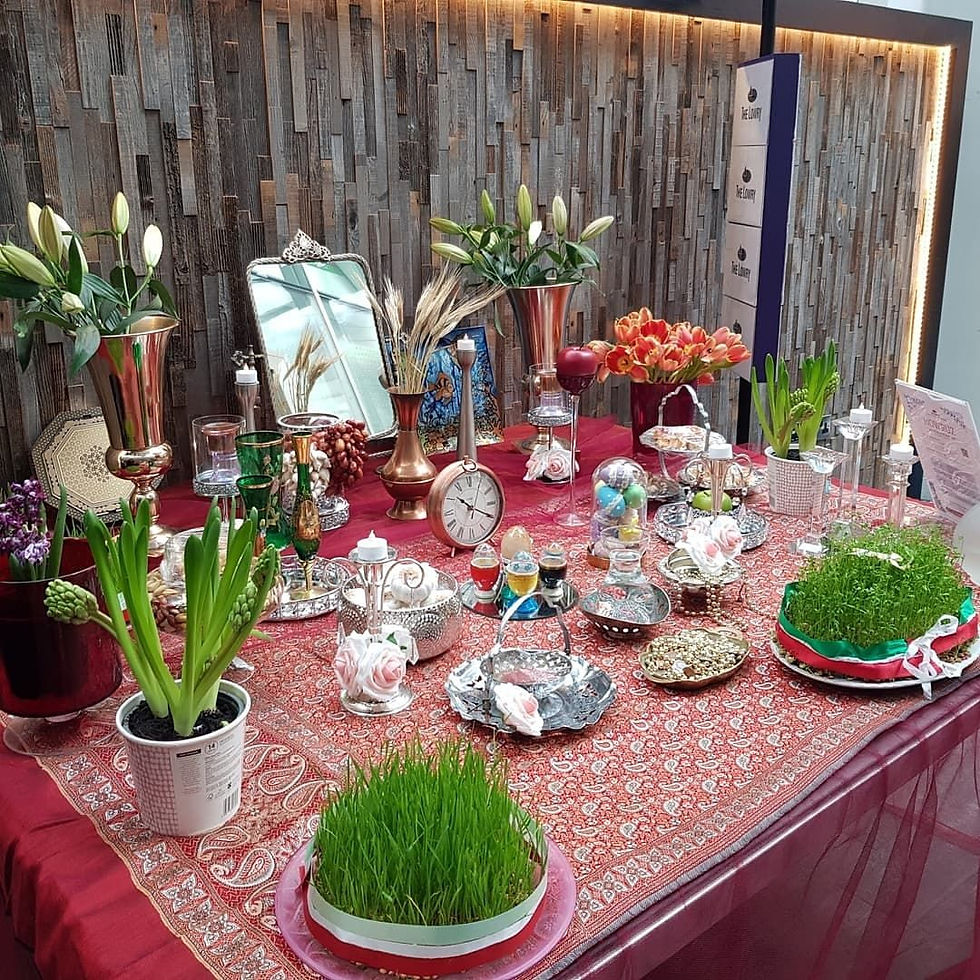Haftseen
- Shahireh Sangrezeh

- Mar 12
- 2 min read
 Haftseen or haftsin هفتسین is made of two words: haft هفت ( seven) and seen سین (one of the Persian alphabets). At the arrival of Spring, the Spring equinox, and throughout the Nowruz celebration, day 1 to day 13 of the New Year, seven symbolic Items that begin with the letter سین are arranged in a tabletop or as a sofreh سفره or spread. These items are organic, although today some non-organic items are also included. Usually sofreh haftseen contains a mix of seven items from the list below:
sabzeh سبزه (a display of sprouted grains grown a few weeks before the arrival of Spring. Many seeds can be used such as: barley, oats, wheat or chia), a symbol of rebirth, renewal, new beginnings and connection with nature. seer سیر (garlic), representing good health. samanu سمنو (a sweet pudding made from germinated wheat and flour), representing prosperity and nature's fertility. seeb سیب (apple), representing beauty and health. serkeh سرکه (vinegar), representing patience and cleansing. In the past to dispel magic. sonbol سنبل (hyacinth), representing life, beauty and freshness. senjed سنجد (the dried fruit of the oleaster tree), representing love. sekeh سکه (coin), representing prosperity. sumach سماغ (dried fruit of Rhus Coriaria, a spice), representing the spice of life.
Today some people also include a copy of a holly book and/or a book of poetry like the work of Hafez or Ferdowsi (Shahnameh). There might also be sweets, a mirror and gold fish representing sweetness of life, clarity and self-awareness and life and movement, respectively. Of course, there are different variations of haftseen in different cities and parts of Iran and other countries that celebrates Nowruz. |





Comments